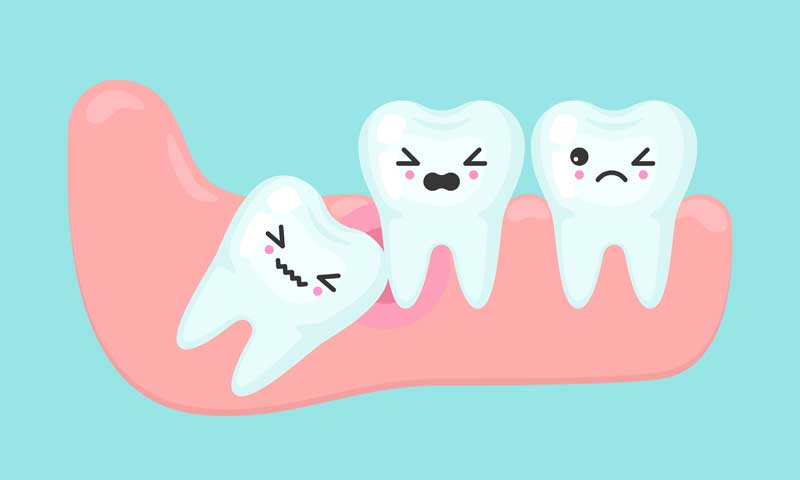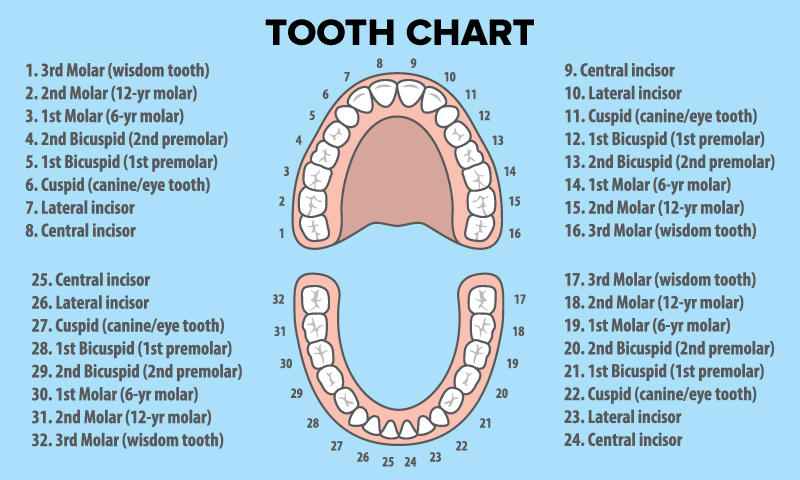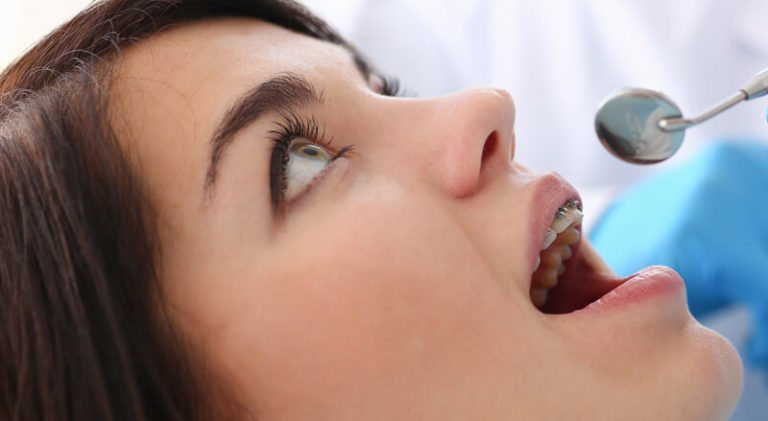Many people are born without wisdom teeth. That’s fine because modern humans no longer need them to chew tough plants or tear apart raw meat. And anyway, who wants to worry about wisdom teeth? Because if you have wisdom teeth, they are likely to become impacted.
Why Makes Wisdom Teeth Troublesome?
Wisdom teeth are a third set of molars. They sit at the very back of your mouth. Not everyone has four wisdom teeth. Some people have none, while some have one, two, or three.
Wisdom teeth usually erupt anywhere from the ages of 17 to 25. By this time, the mouth has all 28 teeth, and it’s often filled to capacity. It’s not easy for wisdom teeth to fit in comfortably when they’re the last to arrive!
In fact, wisdom teeth fitting comfortably is more the exception than the rule.
A former head of the American Association of Oral and Maxillofacial Surgeon’s task force on wisdom teeth, Dr. Louis Raffeto, stated that up to 80% of people’s mouths cannot successfully accommodate wisdom teeth.

What Is an Impacted Wisdom Tooth?
If a wisdom tooth cannot fully emerge or can only partially emerge because of a lack of room in the mouth, it is said to be impacted.
When wisdom teeth emerge, and make an already crowded situation worse, they can cause infections, mouth and ear pain, and encourage swelling and damage to other teeth.
Different Types of Wisdom Tooth Impaction
The lack of room in the mouth can cause wisdom teeth to erupt at weird angles.
Wisdom teeth can:
- Emerge at an unusual angle, facing either the back or the front of the mouth
- Emerge in a lying down position, at a right angle to adjacent teeth
- Partially emerge with the rest of the tooth remaining under the gum line
- Not emerge at all and remain trapped below the gums or jawbone
Since wisdom teeth are so far back in the mouth, it’s often impossible to keep them free of bacteria and food debris.
This makes them likely targets for tooth decay and infection.
Risk Factors for Getting Impacted Wisdom Teeth
Most people experience problems with impacted wisdom teeth during the same years that they erupt—between 17 and 25.
If you have a small jaw, and there are 28 crowded teeth in your mouth, you probably have a greater chance of getting an impacted wisdom tooth (or teeth).
Unfortunately, no amount of brushing and flossing can keep a wisdom tooth from becoming impacted. But knowing the signs to look for, and knowing when to visit a dentist, can keep small dental problems from becoming bigger ones.

Symptoms of Impacted Wisdom Teeth
Not all impacted wisdom teeth cause symptoms. But symptoms will occur if there is infection or damage to nearby teeth.
Common symptoms of impacted wisdom teeth are:
- Swollen, tender or bleeding gums
- Jaw swelling
- Jaw, gum, or tooth pain
- Bad breath or a bad taste in your mouth
- Difficulty opening your mouth

Oral Pain
There are many reasons for tooth pain. Here you can read more about different tooth pain including which pain may indicate a wisdom tooth problem.
However, wisdom teeth can also cause pain when they’re emerging properly.
Some ways to relieve this pain include:
- Taking an over-the-counter pain reliever
- Rinsing your mouth with warm water and a teaspoon of salt to reduce pain and inflammation
- Using an anti-bacterial mouthwash to fight off infections
- Applying an ice pack

When to See a Dentist for Diagnosis and Treatment
If pain persists, or is not relieved by the above suggestions, it’s time to visit your dentist.
If your dentist sees that the wisdom tooth is emerging in its proper position, and is not hurting other teeth, they may suggest leaving the wisdom tooth intact.
Your dentist can then monitor the tooth to make sure it’s being properly cleaned, that infection is not developing, and eruption is proceeding properly.
Dental x-rays can reveal impacted wisdom teeth before any symptoms develop. They will show where the tooth roots are and any damage that already occurred to your jawbone or other teeth.

Treatment for an Impacted Wisdom Tooth
If a wisdom tooth is impacted, or damaging other teeth, your dentist will most likely recommend a wisdom tooth extraction.
A dentist or oral surgeon can perform this procedure.
The intricacy of the surgery depends on the position of the tooth and other factors, such as if the tooth is fully or partially impacted.
Surgery will require either a local anesthetic or general anesthesia.
The dentist or oral surgeon will make an incision into your gums. The tooth and bone that blocks access to the tooth’s root is removed. Finally, the incision is stitched closed, and gauze is packed into the tooth’s socket.
After surgery, you may experience some swelling, bleeding, and pain but the discomfort is usually minor.
Your dentist may prescribe antibiotics to prevent infection and pain medication if needed.
Dry Socket
Sometimes after removal of a wisdom tooth, a dry socket forms where the tooth was. A blood clot can improperly form, or the blood clot can loosen and fall out before the gums have completely healed.
A dry socket can be painful for the patient. However, a good way to minimize the chance of this happening is to follow the dentist’s post-surgery instructions closely.
Recovery from Wisdom Tooth Extraction
Generally, full recovery from impacted wisdom tooth extraction surgery can take up to two weeks.
However, the patient can usually return to their work or school schedule in two or three days.
For several days after surgery, plan on eating soft foods.
At Hamburg Dental Care, we specialize in pain-free dentistry. We always strive to save teeth. If an extraction is necessary, we can make sure that you remain pain free during the procedure by using the Wand Numbing System.
Contact us now to learn more about our pain-free dentistry or to set up an appointment.




